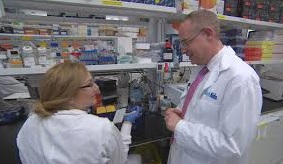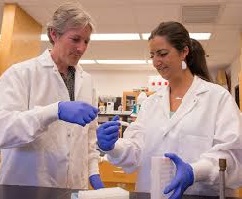We routinely say ‘Crispr’ing’ when we talk about changing specific genes – Paul Knoepfler, a biologist at the University of California
 A new gene-editing technology has been relentlessly hyped over the past year, and it goes by a catchy if rather incongruous acronym: Crispr.
A new gene-editing technology has been relentlessly hyped over the past year, and it goes by a catchy if rather incongruous acronym: Crispr.
Hailed as the breakthrough of 2015 by Science Magazine, Crispr could potentially help eradicate diseases like malaria and, more controversially, could be used to modify the DNA of human embryos. But it’s safe to say that Crispr would not be grabbing the headlines if it were known by its full name: “clustered regularly-interspaced short palindromic repeats.”
The acronym emerged out of email exchanges in 2001 between two microbiologists: Francisco Mojica of the University of Alicante in Spain, and Ruud Jansen, then at Utrecht University in the Netherlands. A team led by Dr. Jansen is believed to be the first to use it in print the following year, in the journal Molecular Microbiology.
Scientists have high hopes for a new gene-editing technology that could provide them with unprecedented power to rewrite the code of life. WSJ’s Monika Auger reports.
Crispr was created to simplify a welter of acronyms that had been proposed by geneticists to label a family of repetitive DNA sequences at the heart of the new biotechnology. In one early email, Dr. Jansen complimented Dr. Mojica on the “snappy” coinage. Two other alternatives, SRSR and Spidr, were deemed “less crispy.”
By having Crispr sound like the pre-existing word “crisper,” the scientists were in fact creating a “backronym.” Had they gone with Spidr instead (for “spacers interspersed direct repeats”), the backronym would have been more creepy than crispy.
As the gene-editing technique caught on at labs around the world, Crispr quickly became part of standard scientific parlance. And for those who were most intimately involved in Crispr experimentation, the word effortlessly moved from noun to verb.
Paul Knoepfler, a biologist at the University of California, Davis and author of the new book“GMO Sapiens,” told me that his lab started using Crispr as a verb early on. “We routinely say ‘Crispr’ing’ when we talk about changing specific genes,” he said. When one of his students successfully uses Crispr to make a genetic modification, a lab-mate may well say, “You Crispr’d it!”
As the Crispr terminology spreads beyond the lab, it’s possible that the verb could mutate. If Crispr is treated like “crisper,” then the “-er” suffix could be removed to make the verb “crisp.”
That is what happened with “laser,” introduced in 1960 as an acronym for “light amplification by the stimulated emission of radiation.” Just two years later, “laser” had spawned the verb “lase.” Similarly, “Taser,” a playful acronym for “Tom Swift’s electric rifle” (a weapon from an old adventure novel), begat “tase.”
Regardless of how Crispr gets verbed, the word is already fusing with others in intriguing ways. Genes that are “Crispr-associated” are simply called “Cas” (an acronym built on an acronym). And a recent essay in the American Journal of Bioethics sounds the alarm that new techniques of gene-editing could, in theory at least, lead to the creation of customized animals dubbed “Crispr Critters.” By combining with other words, Crispr is generating new lexical life-forms.
http://www.wsj.com/articles/crispr-breaks-out-of-the-lab-1452181544
